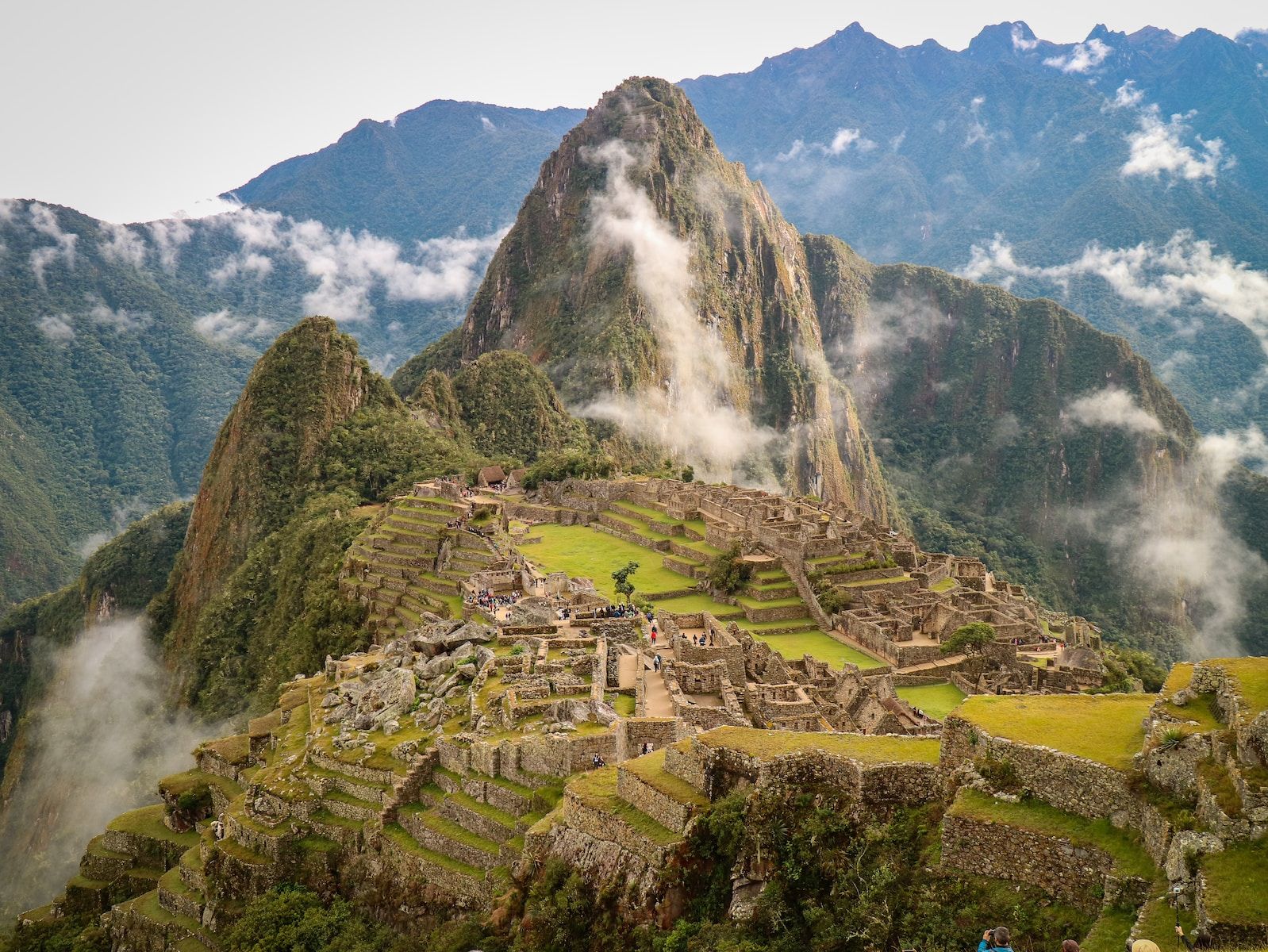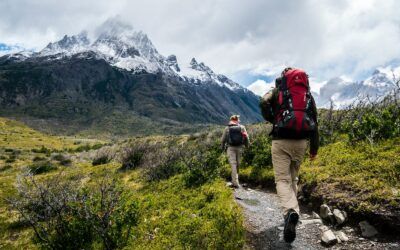The Inca Trail is a renowned hiking route in Peru that leads to the ancient city of Machu Picchu. It is a challenging and rewarding adventure that requires proper training to ensure a successful and enjoyable experience. In this ultimate guide, I will explore the essential aspects of training for the Inca Trail, including warm-up exercises, strength-building workouts, endurance training techniques, and effective strategies to help you conquer this remarkable trek. Get ready to embark on a journey of a lifetime with these expert tips and tricks!
Importance of Warming Up Before Hiking
Before tackling any strenuous physical activity, including hiking, it is crucial to warm up your body properly. A well-executed warm-up routine helps prepare your muscles, joints, and cardiovascular system for the demands of the trail. It increases blood flow, loosens up muscles, enhances flexibility, and reduces the risk of injury during hiking.
A thorough warm-up routine plays a key role in injury prevention. By gradually increasing your heart rate and engaging in dynamic movements such as lunges or leg swings, you activate core muscles and improve stability. This strengthens vulnerable areas like ankles and knees, ensuring better support while traversing uneven terrain.
In addition to injury prevention, warming up before hitting the trail enhances overall performance. By incorporating brisk walks or light jogging into your warm-up routine, you stimulate cardiovascular endurance and elevate oxygen intake levels. This primes your body for sustained activity during hikes while boosting energy levels throughout the journey.
To ensure an effective warm-up, start with light aerobic exercises such as jogging or brisk walking to increase your heart rate and warm up your muscles. Next, incorporate dynamic stretching exercises to improve flexibility and range of motion in your joints. Examples of dynamic stretches include leg swings, arm circles, and lunges. Additionally, include specific exercises that target the muscles used most during hiking, such as squats, lunges, and calf raises. Lastly, don’t forget to warm up your mind as well by mentally preparing for the hike.
Dynamic Stretches for Hiking Training
Dynamic stretches are an excellent way to improve mobility and flexibility, enhancing your walk and overall strength during hiking. By incorporating these exercises into your training routine, you can prevent injuries and perform at your best on the Inca Trail.
- Hip Mobility with Leg Swings: Stand beside a wall or tree for support and swing one leg forward and backward in a controlled motion. This exercise activates the muscles around your hips, increasing their range of motion and improving your stride.
- Shoulder and Upper Body Warm-up with Arm Circles: Extend your arms out to the sides and rotate them in circular motions, both forwards and backward. This exercise loosens up shoulder and upper body muscles, preparing them for the demands of carrying a backpack during the hike.
- Leg Strength and Stability with Walking Lunges: Take big steps forward while keeping your back straight and lower yourself into a lunge position. Push off with the front foot and repeat with the other leg. Walking lunges not only activate the leg muscles but also provide an excellent opportunity to strengthen them for hiking.
Building Strength for the Inca Trail

Building strength is essential for tackling the challenging terrain of the Inca Trail. By incorporating strength exercises into your training routine, you can improve your endurance and power, enabling you to conquer steep inclines and long distances with ease.
- Squats: Strengthen your leg muscles by performing squats with proper form and gradually increasing the resistance. Focus on engaging your glutes, quads, and hamstrings to build endurance for the uphill sections of the trail.
- Plank Variations: Improve core stability and balance by incorporating different plank variations into your training routine. Side planks, forearm planks, and mountain climbers will enhance overall strength and help prevent injury while hiking.
- Step-ups: Mimic the motion of climbing stairs or steep inclines by performing step-ups. This exercise targets the quads, hamstrings, and glutes while also enhancing balance and coordination.
Remember to perform these exercises with proper form and gradually increase the intensity as your strength improves. Consistency and dedication to your training routine will pay off on the Inca Trail.
Core Exercises for Stability and Balance
A strong and stable core is crucial for maintaining balance and stability while hiking on uneven terrain. Incorporating core exercises into your training routine will improve your overall performance on the Inca Trail.
- Planks: Planks are a fundamental core exercise that engages the muscles in your abdomen, back, and shoulders. By holding a plank position, you build strength in the entire core region, improving stability and balance during hikes.
- Russian Twists: This rotational movement targets the obliques and lower back muscles, strengthening them to prevent injury while navigating uneven terrain. Perform Russian twists by sitting on the ground, leaning back slightly, and twisting your torso from side to side while holding a weight or medicine ball.
- Side Planks: Side planks specifically target the lateral muscles of your core, improving side-to-side stability during hikes. To perform a side plank, lie on your side with your forearm on the ground and lift your hips off the floor, creating a straight line from your head to your feet.
Incorporating these three exercises into your training routine will help you master hiking with better control and confidence on the Inca Trail.
Endurance Training for the Inca Trail
Endurance is crucial for tackling the long distances and challenging elevations of the Inca Trail. By incorporating endurance training into your routine, you can improve your stamina and ensure a successful trek.
- Long-Distance Walking: Gradually increase your walking distances over time to train your body for the demands of extended hikes. Choose hiking routes suitable for long-distance walks and focus on increasing your mileage during training.
- Interval Training: Interval training is an effective method for improving stamina and endurance. Alternate between periods of intense activity and short recovery periods to challenge your cardiovascular system and build up its capacity to sustain physical exertion over longer periods of time.
- Speed Drills: Incorporate speed drills into your training routine to improve your overall pace and cardiovascular fitness. Choose a specific distance and run it at your maximum speed, taking sufficient rest in between each repetition.
By incorporating these endurance training techniques into your routine, you’ll be well-prepared for the physical demands of the Inca Trail.
Training Strategies for the Inca Trail
To master training for the Inca Trail, it is crucial to follow a gradual progression of difficulty. Start with easier trails and gradually increase the length and intensity of your hikes. This method allows your body to adapt and build endurance effectively.
Incorporating elevation changes into your training regimen is essential for preparing yourself for the challenging hikes on the Inca Trail. Seek out hilly or mountainous terrains that mimic the conditions you will encounter during the actual trek. Gradually increase the incline as you progress, pushing yourself to overcome more strenuous uphill climbs.
Using a weighted backpack during training can be a valuable tool for enhancing your preparation for the Inca Trail. By adding weight to your pack, you simulate the load you’ll carry during longer treks. Begin with a modest amount of weight and gradually increase it over time, focusing on maintaining good posture and balance throughout each session.
Remember, mastering training for the Inca Trail requires dedication, consistency, and strategic planning in your training routine. Implement these exercises and strategies to maximize your preparation for the unforgettable adventure awaiting you on the Inca Trail.
Tips for Successful Inca Trail Training
- Choose the Right Footwear and Clothing: Invest in high-quality hiking boots that provide ankle support and traction. Wear moisture-wicking clothing to keep you dry and comfortable during your training sessions.
- Prioritize Hydration and Nutrition: Stay hydrated by drinking water regularly throughout your hikes, especially in hot weather. Fuel your body with nutritious snacks like trail mix or energy bars to maintain energy levels and prevent muscle fatigue.
- Allow Time for Rest and Recovery: Rest is crucial for muscle repair and preventing injuries. Schedule regular rest days between intense training sessions to give your body time to recover, allowing you to perform at your best during future hikes.
By following these tips and incorporating the recommended exercises and strategies into your training routine, you can enhance your Inca Trail training experience, improve performance, and ensure a safe and memorable journey on the trails.
Dreaming of conquering the iconic Inca Trail to Machu Picchu? Make your dream a reality with my specialized hiking and trekking training programs at Aspire for Adventure! Whether you’re embarking on your first hike to the awe-inspiring Machu Picchu or seeking to relive the magic with a fresh perspective, my comprehensive programs are designed to prepare you for this legendary journey. Start your training today!





0 Comments